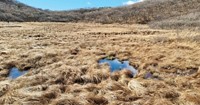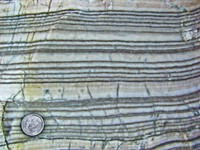Advertisement
Grab your lab coat. Let's get started
Welcome!
Welcome!
Create an account below to get 6 C&EN articles per month, receive newsletters and more - all free.
It seems this is your first time logging in online. Please enter the following information to continue.
As an ACS member you automatically get access to this site. All we need is few more details to create your reading experience.
Not you? Sign in with a different account.
Not you? Sign in with a different account.
ERROR 1
ERROR 1
ERROR 2
ERROR 2
ERROR 2
ERROR 2
ERROR 2
Password and Confirm password must match.
If you have an ACS member number, please enter it here so we can link this account to your membership. (optional)
ERROR 2
ACS values your privacy. By submitting your information, you are gaining access to C&EN and subscribing to our weekly newsletter. We use the information you provide to make your reading experience better, and we will never sell your data to third party members.
Greenhouse Gases
Microbes help release CO2 from eroding rocks
Carbon oxidation happens at a faster rate than scientists expected
by Katharine Sanderson, special to C&EN
April 22, 2018
| A version of this story appeared in
Volume 96, Issue 17

Rocks may seem chemically inert, but carbon and oxygen constantly move between the atmosphere and the land. A new study reveals insights into tiny players in this cycle. Microorganisms can release carbon dioxide from eroding rocks to the atmosphere more quickly than researchers expected, according to the study.
Scientists previously thought that eroding mountains served as carbon sinks, pulling CO2 from the atmosphere by forming carbonate minerals. Jordon Hemingway of Harvard University and colleagues studied carbon release in the Central Mountain Range of Taiwan, which erodes quickly thanks to frequent typhoons and landslides.
They estimated that at least 67% of the organic carbon held in the bedrock had been released—presumably by oxidation to CO2.
To determine whether microbes were responsible for this oxidation, the researchers looked at the ratio of carbon-13 to carbon-12 in fatty acids present in the soil. The team knew that only bacteria could produce these fatty acids. The carbon isotope ratio matched that of the organic carbon found in the rock, indicating that the microbes were the ones oxidizing the carbon. Hemingway’s team estimates that 6.1 to 18.6 metric tons of carbon per km2 gets oxidized every year by microbes at these rapidly eroded sites (Science 2018, DOI: 10.1126/science.aao6463).
Hemingway points out that this microbial oxidation of carbon is important on the scale of millions of years. “In terms of anthropogenic climate change, the processes we looked at in our study are unlikely to have any measurable effect,” he says.
As a next step, Hemingway hopes to perform genomic analyses to determine which microbes are responsible for turning the carbon under our feet into CO2 in the air.




Join the conversation
Contact the reporter
Submit a Letter to the Editor for publication
Engage with us on Twitter